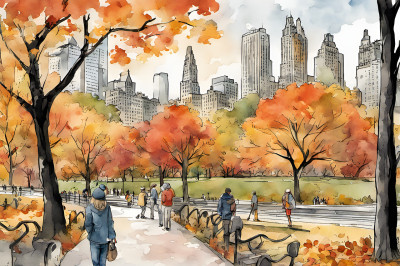Understanding Anime Tourism
Anime tourism is a growing phenomenon where fans of Japanese animation, or anime, travel to visit real-world locations depicted in their favorite series. This unique form of tourism is driven by the desire to experience the settings that have become iconic within various anime narratives. These locations, ranging from bustling cityscapes to tranquil rural areas, often gain a near-mythical status among the anime community.
The Allure of Anime WorldsThe Emotional Connection
For many fans, anime is more than just entertainment; it's a passion that can evoke strong emotional connections to the characters and stories. When these narratives are set against the backdrop of real locations, the lines between fiction and reality blur, creating a powerful draw for fans to visit these places in person.
The Visual Appeal
Anime is renowned for its vibrant art style and meticulous attention to detail in depicting environments. Fans are often captivated by the beauty of the anime worlds and are eager to see and compare the animated vistas with their real-world counterparts.
The Impact on Local CommunitiesBoosting Local Economies
Anime tourism can have a significant economic impact on the destinations featured in popular series. Fans who visit these areas spend money on accommodations, dining, and merchandise, providing a boost to local businesses.
Cultural Exchange
As fans from around the world flock to these anime hotspots, there is an opportunity for cultural exchange. Visitors learn about local customs and traditions, while residents gain a better understanding of the global appeal of anime.
Popular Anime Tourism DestinationsPilgrimage Sites
Certain locations have become pilgrimage sites for anime fans, such as the town of Oarai in "Girls und Panzer" or the various Tokyo neighborhoods featured in "Your Name." These places often embrace their anime heritage with themed events, exhibitions, and tours.
Anime-Themed Attractions
Japan has also seen the rise of anime-themed attractions, like the Ghibli Museum and the upcoming Studio Ghibli theme park. These destinations are designed to immerse visitors in the worlds created by their favorite anime studios.
The Role of Media and TechnologySocial Media Influence
Social media plays a pivotal role in promoting anime tourism. Fans share their travel experiences and photos online, inspiring others to embark on similar journeys.
Augmented Reality Experiences
Advancements in technology, such as augmented reality (AR), have the potential to enhance the anime tourism experience, allowing fans to interact with their favorite characters and scenes in new and exciting ways.
Challenges and ConsiderationsPreservation of Sites
As anime tourism grows, there is a need to balance the influx of visitors with the preservation of the sites. Local authorities and tourism boards must work together to ensure that these locations are not overwhelmed by their popularity.
Respect for Residents
It's important for visitors to remember that while these locations are famous for their anime connections, they are also home to residents who may not share the same enthusiasm for the influx of tourists. Respectful behavior and cultural sensitivity are essential.
By understanding the various facets of anime tourism, one can appreciate the intricate relationship between fictional narratives and their real-world impact. As this form of tourism continues to evolve, it will undoubtedly shape the way fans interact with their beloved anime worlds and the communities that host them.
The Impact of Popular Anime on Tourist DestinationsEconomic Growth Through Increased Tourism
The popularity of anime has significantly contributed to the economic growth of various regions in Japan by attracting tourists who wish to visit locations depicted in their favorite series. These visitors not only tour the sites but also spend on accommodation, dining, and purchasing merchandise or local products. This influx of anime-inspired tourism has led to the creation of new businesses and the revitalization of existing ones, as entrepreneurs capitalize on the demand for anime-related experiences.
Creation of Anime Pilgrimage Sites
Certain locales have become pilgrimage sites for fans, known as "seichi junrei," where they can step into the worlds of their beloved characters. These destinations often see a surge in visitors following the airing of an anime series that features recognizable landmarks. Local governments and tourism boards have recognized this trend and are actively promoting these locations through maps, guides, and collaborations with anime studios.
Cultural Exchange and International Recognition
Anime tourism has facilitated cultural exchange by drawing international visitors keen on experiencing Japanese culture as depicted in anime. This has led to increased international recognition for some previously lesser-known areas, as fans from around the world share their travel experiences on social media and in fan communities.
Preservation and Promotion of Local Heritage
Anime tourism has inadvertently contributed to the preservation of local heritage and traditions. Tourists' interest in the authentic aspects of the locations they visit has encouraged communities to maintain and promote their cultural heritage. This includes traditional festivals, historical architecture, and local crafts that might otherwise have been overlooked.
Challenges and Sustainability Concerns
While the economic benefits are clear, the rise in tourism can also pose challenges. Some locations struggle with the environmental and infrastructural impact of a sudden increase in visitors. There is a growing need for sustainable tourism practices to ensure that the natural and cultural integrity of these destinations is preserved for future generations.
Diversification of Tourist Activities
To capitalize on the anime tourism trend, destinations have diversified their tourist offerings. This includes the establishment of themed cafes, exhibitions, and anime-related events. These activities not only enhance the tourist experience but also provide additional revenue streams for the local economy.
Impact on Real Estate and Urban Development
The popularity of certain areas due to anime has had a noticeable impact on real estate values and urban development. Properties in these areas may see an increase in value, and local governments may invest in infrastructure improvements to accommodate the growing number of visitors.
Collaboration with Anime Studios and Creators
Tourist destinations have begun collaborating directly with anime studios and creators to develop exclusive content and merchandise. This partnership benefits both the tourism industry and the anime industry, creating a symbiotic relationship that promotes both the real locations and the fictional stories.
Revitalization of Rural Areas
Anime tourism has had a particularly strong impact on rural areas, which are often the settings for popular anime. These regions, which may have previously been experiencing depopulation and economic decline, have found a new lease on life as fans flock to them, bringing new opportunities and a renewed sense of community pride.
Exploring Iconic Locations: From Tokyo to Rural JapanTokyo: A Hub for Anime Pilgrimages
Tokyo, the bustling capital of Japan, is often the starting point for anime tourism. The city's Akihabara district, also known as "Electric Town," is a mecca for anime and manga enthusiasts, with its plethora of stores selling anime merchandise, manga, and electronics. Visitors can immerse themselves in the otaku culture, with maid cafes and anime-themed events adding to the experience.
The district of Shibuya has gained international fame through the anime "Shibuya Scramble Crossing" featured in numerous anime, such as "The World Ends with You." Fans flock to the crossing to recreate scenes from their favorite shows and capture the essence of Tokyo's fast-paced life.
Real-Life Inspirations Behind Studio Ghibli's Masterpieces
Studio Ghibli's films, particularly those directed by Hayao Miyazaki, have inspired fans to visit the real-world locations that sparked the creation of their beloved animated worlds. The serene forest of Sayama Hills, often referred to as "Totoro's Forest," is believed to be the inspiration for the setting of "My Neighbor Totoro." Fans can wander through the lush greenery and hope to catch a glimpse of the forest's mystical creatures.
Inokashira Park, located in the city of Mitaka, is another spot frequented by Ghibli enthusiasts. The park's tranquil atmosphere and scenic beauty are reminiscent of scenes from "The Wind Rises" and "Whisper of the Heart."
Kyoto: Stepping into Historical Anime Settings
Kyoto, with its well-preserved historical districts and traditional architecture, has served as the backdrop for numerous anime. The city's Fushimi Inari Shrine, known for its thousands of vermilion torii gates, was featured in the anime "Inari, Konkon, Koi Iroha." Anime fans visit the shrine to follow the paths of the characters and experience the spiritual and historical significance of the site.
The district of Gion, famous for its geisha culture, appears in "Gintama" and "Rurouni Kenshin." Visitors can explore the narrow streets and old wooden buildings, feeling as though they have stepped into the Edo period.
Rural Japan: Discovering the Scenic Landscapes of Anime
The rural regions of Japan offer a stark contrast to the urban landscapes of Tokyo and Kyoto, providing a serene backdrop for many anime series. The quaint town of Takayama in Gifu Prefecture, with its traditional houses and mountainous setting, is often likened to the town depicted in "Your Name." Anime tourists can explore the Hida region and experience the local culture and cuisine, drawing parallels to the life of the film's characters.
The village of Shirakawa-go, a UNESCO World Heritage site, is known for its gassho-zukuri farmhouses and picturesque scenery. It served as the inspiration for the village in "Higurashi When They Cry." Despite the anime's dark themes, visitors are captivated by the area's peaceful beauty and traditional charm.
Coastal Towns and the Lure of Seaside Anime
Japan's coastal towns have not escaped the anime spotlight. The port town of Onomichi in Hiroshima Prefecture inspired the setting for "Kamichu!" Fans can visit the town's temples, the scenic Senkoji Park, and the characteristic slopes and stairways that feature prominently in the anime.
The city of Iwami in Tottori Prefecture was the real-life setting for "Free! Iwatobi Swim Club." The anime's depiction of the clear blue waters and the community's strong ties to swimming and the sea has encouraged fans to visit and experience the coastal lifestyle portrayed in the series.
The Impact of Anime Tourism on Local Communities
Anime tourism has had a significant impact on local communities across Japan. Small towns and rural areas, which might have been overlooked by the typical tourist, are now experiencing an influx of visitors eager to see the locations that inspired their favorite anime. This has led to the creation of new tours, merchandise, and even local festivals celebrating the anime connection.
Local economies have benefited from this trend, with increased spending on accommodations, dining, and shopping. Some locales have embraced their anime fame, installing statues, murals, and informational plaques to guide and educate visitors about the anime-related significance of their town.
Anime Pilgrimages: Fans' Quests to Visit Real-World SettingsThe Concept of Anime Pilgrimages
Anime pilgrimages, or "seichi junrei," refer to the practice of fans visiting locations that are depicted in their favorite anime series. These locations can range from bustling urban districts to tranquil rural landscapes, and they often hold a special significance within the narratives of the anime. Fans embark on these journeys to experience the settings that have captivated them on screen, seeking a deeper connection with the stories and characters they love.
Motivations Behind the PilgrimagesEmotional Connection
For many fans, the primary motivation for undertaking an anime pilgrimage is the emotional bond they have formed with a particular series. Visiting the real-world settings allows them to immerse themselves in the same environment as their beloved characters, creating a tangible link between fiction and reality.
Community and Fandom
Anime pilgrimages also serve as a means for fans to engage with the broader community. These trips often facilitate meetups with fellow enthusiasts who share similar interests, fostering a sense of camaraderie and belonging within the fandom.
Cultural Exploration
Anime often showcases various aspects of Japanese culture, and pilgrimages provide fans with an opportunity to explore these cultural elements firsthand. From traditional festivals to local cuisine, these visits can enrich the understanding of Japan's heritage and contemporary society.
Popular Destinations for Anime PilgrimagesUrban Landmarks
Cities like Tokyo, with districts such as Akihabara and Shibuya, are hotspots for anime pilgrimages. Iconic urban settings from series like "Steins;Gate" and "Durarara!!" attract numerous visitors looking to walk in the footsteps of their favorite characters.
Rural and Scenic Spots
The picturesque town of Oarai in Ibaraki Prefecture, featured in "Girls und Panzer," and the serene setting of Lake Kizaki in Nagano, which inspired "Onegai Teacher," are examples of rural destinations that have gained popularity among anime tourists.
Temples and Shrines
Historic sites such as the Fushimi Inari Shrine in Kyoto, which appeared in "Inari, Konkon, Koi Iroha," draw fans interested in the spiritual and aesthetic aspects depicted in anime.
The Impact on Local CommunitiesEconomic Benefits
The influx of visitors can provide a significant economic boost to local communities, with businesses catering to the needs of anime tourists by offering themed merchandise, guided tours, and other specialized services.
Cultural Exchange
Anime pilgrimages facilitate cultural exchange, as locals and visitors interact and share their perspectives. This can lead to a greater appreciation of the locale's history and traditions, both domestically and internationally.
Preservation and Promotion
In some cases, the attention brought by anime pilgrimages has led to the preservation and promotion of cultural landmarks. Local governments and organizations sometimes collaborate with anime studios to create maps and guides, making it easier for fans to locate and appreciate the real-world settings.
Challenges and ConsiderationsSustainability
As anime tourism grows, concerns about sustainability and the impact on local residents arise. It is important for both visitors and the communities to consider the long-term effects of increased tourism and to strive for practices that minimize disruption while maximizing mutual benefits.
Respect for Locals
Visitors on anime pilgrimages must remain mindful of the local residents and their daily lives. It is crucial to respect private property and maintain decorum, ensuring that the pilgrimage experience is positive for everyone involved.
Authenticity vs. Commercialization
There is a delicate balance between maintaining the authenticity of the locations and the commercialization that often accompanies increased tourism. Fans and local stakeholders alike must navigate this tension to preserve the integrity of the real-world settings that have become beloved through anime.
The Economic Benefits of Anime Tourism for JapanBoost in Local Economies
Anime tourism has become a significant contributor to local economies in Japan. When fans visit locations featured in their favorite anime, they spend money on a variety of services, including accommodation, dining, and transportation. This influx of tourists can be particularly impactful for rural areas or smaller cities that are not typically considered tourist hotspots. By drawing visitors to these off-the-beaten-path destinations, anime tourism can help to diversify and stabilize local economies that might otherwise rely on a limited range of industries.
Merchandise and Souvenir Sales
The sale of anime-related merchandise and souvenirs represents a direct economic benefit of anime tourism. Fans often purchase items such as figurines, clothing, posters, and other memorabilia as a way to remember their visit and show support for their favorite series. Local businesses and vendors capitalize on this demand by offering exclusive goods that can only be purchased at these specific locations, encouraging more spending and generating additional revenue for the region.
Creation of Jobs
The rise in anime tourism has led to the creation of new jobs and the expansion of the tourism sector. This includes employment opportunities in hotels, restaurants, tour companies, and retail stores that cater to the needs of anime tourists. The demand for guided tours and experiences related to anime has also increased, providing work for local guides and interpreters who specialize in this niche market. These jobs contribute to the overall employment rate and can help to reduce unemployment in areas where anime tourism is prevalent.
Investment in Infrastructure
To accommodate the growing number of visitors, there has been increased investment in infrastructure. This includes the development of new hotels, improvements to public transportation, and the creation of dedicated spaces for anime-related events. These investments not only serve the immediate needs of anime tourists but also have long-term benefits for the community by enhancing the overall quality of infrastructure and services available to residents.
Promotion of Japanese Culture
Anime tourism promotes Japanese culture and traditions, which can have indirect economic benefits. As tourists engage with the cultural aspects of anime, they may develop an interest in other traditional Japanese experiences, leading to increased spending on cultural activities such as tea ceremonies, traditional crafts, and visits to historical sites. This broader interest in Japanese culture can lead to a more diverse and robust tourism industry.
Tax Revenue and Economic Growth
The government benefits from anime tourism through increased tax revenues. The taxes collected from businesses that thrive due to anime tourism, such as hotels and restaurants, contribute to local and national coffers. This additional revenue can be used to fund public services and infrastructure projects, further stimulating economic growth. The success of anime tourism can also attract foreign investment, as investors seek to capitalize on this growing market.
Global Branding and Marketing
Anime tourism enhances Japan's global branding and marketing. As fans share their experiences online and through social media, they effectively become brand ambassadors for Japan, showcasing the country's attractions and hospitality. This free marketing can lead to increased international interest in Japan as a travel destination, potentially boosting the overall number of tourists and further expanding the economic benefits beyond the realm of anime tourism.
Anime Events and Festivals: Celebrating Japanese CultureMajor Anime Conventions
Japan hosts several major anime conventions that attract fans from around the world. These conventions are often the epicenter of anime tourism, offering a deep dive into the culture and industry.
AnimeJapan is one of the largest anime conventions globally, held annually in Tokyo. It features exhibitions from major anime studios, showcases upcoming series, and offers merchandise sales, stage events, and cosplay areas.
Comiket (Comic Market) is the world's largest doujinshi fair, held twice a year in Tokyo. It focuses on fan-made works and is a cultural phenomenon, drawing hundreds of thousands of manga and anime enthusiasts.
Tokyo Game Show includes a significant anime component, given the close relationship between gaming and anime. It provides a platform for new game announcements, many of which are tied to popular anime franchises.
Regional Anime Festivals
Many regions in Japan have their own anime festivals, celebrating local anime that have contributed to the area's fame.
Kyoto International Manga Anime Fair is Kyoto's largest manga and anime event, showcasing the Kansai region's contributions to the industry.
Saitama's Anitamasai is an anime festival in Saitama City, celebrating series set in the region like "Lucky Star" and "Anohana."
Machi★Asobi in Tokushima has become a biannual event that blends anime with local culture, including screenings, talk shows, and a cosplay parade across the city's famous bridges.
Anime Pilgrimage Events
Anime pilgrimages, where fans visit real-world locations depicted in their favorite shows, often coincide with local events.
Seichijunrei or "sacred site pilgrimage," is a phenomenon where fans visit locations that inspired or are depicted in anime. Events are organized around these pilgrimages, including exhibitions, guided tours, and local collaborations.
In Chichibu, the setting for "Anohana: The Flower We Saw That Day," fans can participate in events that recreate scenes from the anime or offer special goods related to the show.
Numazu, the backdrop for "Love Live! Sunshine!!," hosts events that include stamp rallies, where fans visit various locations to collect stamps and win exclusive merchandise.
Anime-Related Exhibitions
Museums and galleries across Japan host anime-related exhibitions that often become temporary pilgrimage sites for fans.
The Ghibli Museum in Mitaka is dedicated to the works of Studio Ghibli and features special exhibitions, exclusive short films, and a look into the animation process.
Osamu Tezuka Manga Museum in Takarazuka honors the "God of Manga," with exhibitions on his work and the history of manga and anime.
Naruto & Boruto Shinobi-Zato is an interactive exhibition in Awaji Island Anime Park, where visitors can immerse themselves in the world of the popular ninja-themed anime.
Anime Film Festivals
Film festivals dedicated to anime screen classic and contemporary works, often including premieres and retrospectives.
Tokyo Anime Award Festival is an annual event that recognizes excellence in animation. It includes screenings of award-winning titles and fan-favorite series.
Hiroshima International Animation Festival is a biennial event that celebrates animated films from around the world, including a competitive selection of anime.
Cosplay Events
Cosplay is a vital part of anime culture, and there are events specifically dedicated to this art form.
World Cosplay Summit held in Nagoya, is an international competition where cosplayers from around the globe showcase their costumes and performances.
Ikebukuro Halloween Cosplay Fest transforms Tokyo's Ikebukuro district into a cosplay hub, with thousands of fans dressing up and participating in parades and contests.
Industry Events
Events that focus on the anime industry itself provide insights into the creation and distribution of anime.
Anime Production Panel Discussions are often held at conventions, where creators, directors, and voice actors discuss the behind-the-scenes work of anime production.
Anime Business Conferences such as the Anime Expo Business Conference in Tokyo, offer a platform for industry professionals to network, share insights, and discuss the future of anime in a global context.
Challenges and Sustainability of Anime TourismOvercrowding and Strain on Local Communities
Anime tourism can lead to a significant influx of visitors to areas that are not always equipped to handle large crowds. This can result in overcrowding, which not only detracts from the visitor experience but also places a strain on local infrastructure and resources. Small towns and neighborhoods that are the settings for popular anime may find their public services and facilities overwhelmed by the sudden increase in foot traffic, leading to wear and tear on public spaces, littering, and noise pollution.
Cultural Misunderstandings and Respect for Locals
The cultural exchange that comes with anime tourism isn't always positive. Tourists may arrive with little understanding of local customs and norms, potentially leading to behaviors that are seen as disrespectful by residents. This can create tension between visitors and locals, and in some cases, lead to a backlash against tourists. Ensuring that visitors are educated about local culture and respectful of community rules is crucial for the sustainability of anime tourism.
Environmental Impact
The environmental impact of increased tourism is a concern for many destinations featured in anime. The natural landscapes that often serve as inspiration for anime settings can be particularly vulnerable to damage from increased foot traffic, littering, and other forms of pollution. Protecting these environments requires careful management and the implementation of sustainable tourism practices to ensure that they can be enjoyed by future generations of both fans and locals.
Economic Dependency and Diversification
While anime tourism can provide an economic boost to certain areas, there is a risk of communities becoming too dependent on this single industry. A sudden decline in popularity or a shift in consumer interests could lead to economic difficulties for areas that have not diversified their economies. It is important for these destinations to develop a balanced approach to tourism that does not rely solely on anime-related attractions.
Authenticity and Commercialization
As anime tourism grows, there is a risk that the authentic experiences sought by visitors may be compromised by commercialization. The desire to capitalize on the popularity of anime can lead to the creation of inauthentic attractions or experiences that detract from the unique qualities of the destination. Balancing the need for economic benefits with the preservation of authenticity is a key challenge for sustainable anime tourism.
Long-Term Engagement and Interest
Maintaining long-term interest in anime tourism destinations is another challenge. Anime series can be fleeting in popularity, with new series quickly overshadowing older ones. This can result in a boom-and-bust cycle for tourism in areas associated with specific anime. Developing strategies to keep these destinations appealing, even as the popularity of the anime that made them famous wanes, is essential for sustainability.
Infrastructure Development and Maintenance
Investing in infrastructure is crucial to support the growth of anime tourism. This includes not only the physical infrastructure like roads, transportation, and facilities but also digital infrastructure such as multilingual websites and online booking systems. However, the cost of developing and maintaining such infrastructure can be high, and there is no guarantee that the investment will be recouped if the popularity of the anime declines.
Balancing Visitor Experience with Preservation
Finally, ensuring that the visitor experience remains high quality while also preserving the sites is a delicate balance. Measures such as limiting visitor numbers, requiring advanced bookings, or even charging additional fees for maintenance and conservation can help manage this balance. However, these measures must be carefully considered to avoid deterring visitors and to ensure that the tourism remains accessible and enjoyable.
The Future of Anime Tourism: Trends and DevelopmentsVirtual Reality and Augmented Reality Experiences
As technology advances, anime tourism is expected to incorporate more virtual reality (VR) and augmented reality (AR) experiences. These technologies can enhance the visitor experience by bringing anime worlds to life in new and immersive ways. For example, VR could allow tourists to step into a 360-degree recreation of their favorite anime scenes, while AR could overlay animations and characters onto the real-world environment, making it seem as if visitors are truly interacting with the anime universe.
Collaboration with Local Governments and Businesses
The trend of local governments and businesses collaborating to promote anime tourism is likely to continue and expand. By working together, they can create comprehensive travel packages that include themed accommodations, dining experiences, and guided tours. These partnerships can also lead to the development of permanent attractions, such as museums and theme parks, dedicated to popular anime series, which can provide a steady stream of visitors and economic benefits to the regions.
Anime Pilgrimage and Seasonal Events
Anime pilgrimages, where fans visit locations featured in their favorite shows, are becoming increasingly organized and promoted. In the future, we can expect to see more seasonal events tied to specific anime, capitalizing on the changing landscapes to match the series' settings. These events can offer exclusive merchandise, limited-time experiences, and interactive exhibits that align with the anime's themes, drawing fans to visit at different times of the year.
Expansion of Anime-Inspired Accommodations
The trend of anime-inspired accommodations, such as themed hotels and ryokan (traditional Japanese inns), is set to grow. These lodgings provide fans with a unique opportunity to fully immerse themselves in the anime experience, with rooms decorated to reflect different series and characters. Future developments may include more personalized experiences, such as custom voice messages from favorite characters or in-room anime streaming services with exclusive content.
Integration of Anime Tourism with Cultural Education
Anime tourism offers a unique opportunity to integrate entertainment with cultural education. Future initiatives may focus on educating visitors about Japanese culture, history, and traditions through the lens of anime. This could involve workshops, language classes, and cultural demonstrations that tie in with anime themes, providing a deeper understanding and appreciation of Japan beyond the animated world.
Sustainable Anime Tourism
As global awareness of sustainability grows, the future of anime tourism will likely include a focus on eco-friendly practices. This could involve the promotion of public transportation options to anime sites, the development of sustainable merchandise, and the implementation of environmental conservation efforts at tourist attractions. Ensuring that anime tourism does not negatively impact the local environment will be crucial for its long-term success.
Enhanced Global Marketing Strategies
To attract a broader international audience, enhanced global marketing strategies will be essential. This may include multilingual promotional materials, international partnerships with anime streaming platforms, and targeted social media campaigns. By reaching out to potential tourists in their own languages and through familiar channels, Japan can tap into the growing global fanbase of anime enthusiasts.
Leveraging Technology for Personalized Experiences
The use of big data and AI could lead to more personalized anime tourism experiences. By analyzing visitor preferences and behaviors, tourism operators can offer customized itineraries, recommendations, and even interactive experiences that cater to individual interests. This level of personalization can make each visit unique and encourage repeat tourism.
Cross-Media Storytelling
Anime tourism can benefit from cross-media storytelling, where narratives extend beyond the screen into the real world. This could involve anime series that incorporate real locations into their storylines, encouraging fans to visit these places to uncover additional content or story elements. This strategy can create a more engaging and layered experience for tourists, blurring the lines between fiction and reality.
The Role of Fan Communities
Fan communities will continue to play a significant role in the future of anime tourism. These communities can drive the popularity of certain locations and influence the development of new tourist attractions. Engaging with fan communities through events, forums, and social media can help tourism operators understand what fans are looking for and create experiences that resonate with them.








































